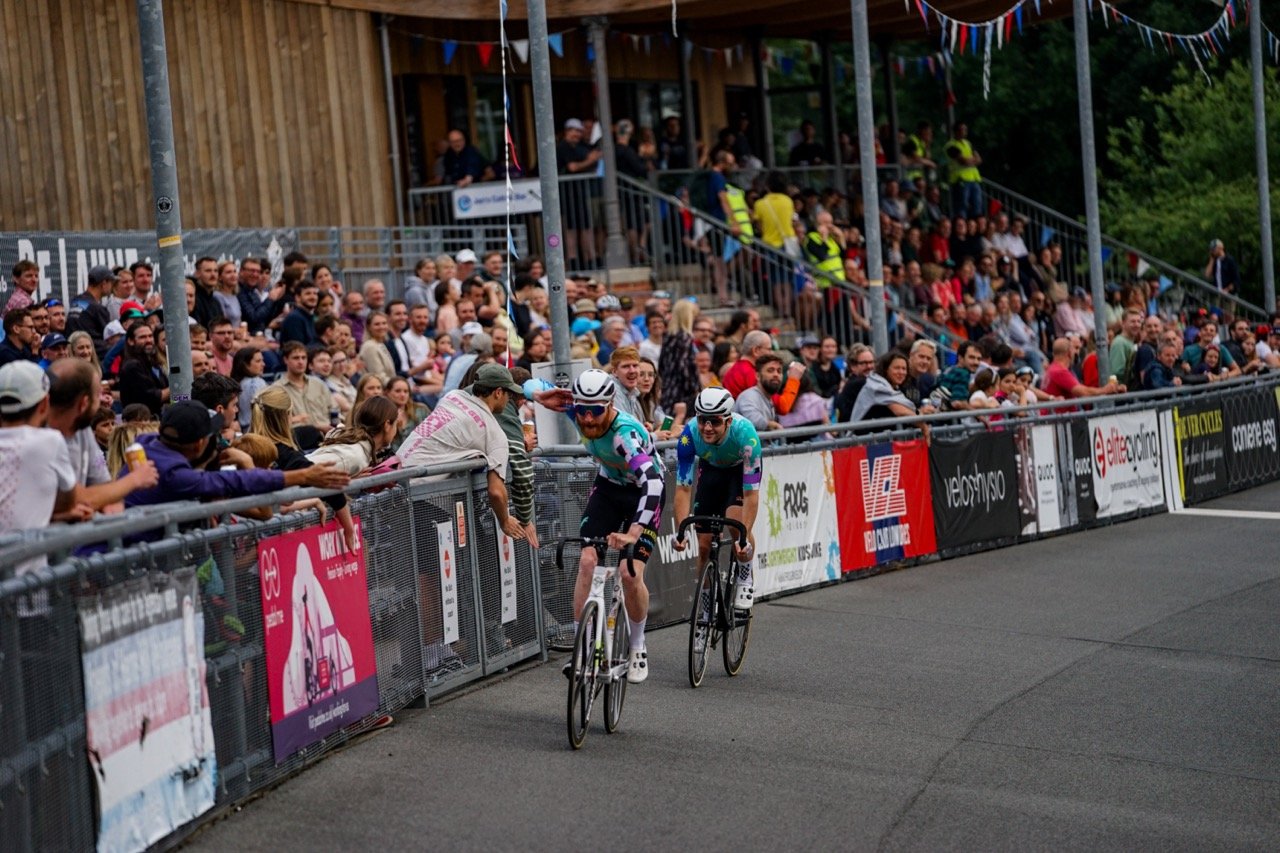A beginner’s guide to track cycling
Team Tekkerz take on the Madison Flying Lap. Photo by Tom Owers
Welcome to the South London Grand Prix!
We’ve created a guide to Track Cycling to help you understand what you’re watching: it’s not all just going round in circles.
Riders
Why distinguish Sprint and Endurance Riders & Events?
In track cycling, there are various races, but ultimately, riders fall into two categories: Sprint and Endurance. Sprint riders participate in races that involve short and intense efforts. Endurance riders take part in bunch races, maintaining high speeds over longer distances.
There’s no team tactics on the track: riders compete as individuals even if they are part of the same team (except for specific team events).
The Track
Understanding the track markings…
Cote D'Azur (also known as the 'blue band'): This lies between the safety zone and the track. There's a good chance riders will be eliminated for riding on it during races - in an attempt to gain an advantage - especially the elimination race.
White Line: This line represents the shortest and fastest distance around the track. Riders aim to stay on this line as much as possible during the race.
Red Line: If a rider intends to overtake another cyclist riding within the sprinter's lane (the space between the white and red lines), they must do so while maintaining a safe distance. Overtaking in this lane requires being above the red line. This line is also known as the sprinter's line.
Blue Line: Also known as the Stayer’s line. It has no significance for racing, but is an aid for riders in warm-ups and training sessions.
Finish Line: The finish line stretches across the width of the track, positioned toward the end of the home straight.
200m Line: The line stretching across the width of the track toward the end of the back straight - this is where sprinters’ ‘Flying 200’ time is measured from.
The Races
Bunch Races involve a mass start, and cover a set number of laps.
Omnium: Riders who compete in an Omnium will have to race as consistently as possible over a series of races to score the most points and win the grand prize. These races are: Scratch, Tempo, Elimination and Points.
Scratch: The Scratch race is outwardly the simplest race on the track: the first across the finish line wins. However watch out as the complex tactics within the race make for an exciting and unpredictable outcome!
Tempo: A point for the first rider across the line every lap (except for the first 4 laps) - most points wins.
Elimination: In the Elimination race, the rider who finishes last each lap gets eliminated. The last rider remaining wins.
Points race: Points are scored by the top four riders across the finish line every 5 laps. They are distributed as: first place = 5 points, second place = 3 points, third place = 2 points, fourth place = 1 point. The rider who scores the most points throughout the race wins. Points are doubled for the final sprint, so watch out for anyone keeping their powder dry to the end as this can make a big difference!
Madison: Pairs of riders compete in a scratch race, swapping the ‘active’ rider throughout by exchanging with a handsling.
Madison Flying Lap: A one lap time trial, where a handsling must be performed within the timed lap to exchange riders in a pair.
Sprint Races
Flying 200: A 200 metre time trial that determines sprinters’ seeding for the Match Sprints.
Match Sprint: Two riders, head-to-head, over 2 laps.
Keirin: Three laps with riders paced up to speed by a derny (a motorised bicycle). After setting the pace, the derny bike exits the track, and the riders sprint over the remaining lap to reach the finish line - first across the line wins.
Youth Support Racing: The best local youngsters light up the track with some short, sharp races.
FAQ / Common Questions
How long is Herne Hill Velodrome?
HHV’s current track measures 450 metres on the white line.
Why Are Velodromes Banked?
The banked curves help riders maintain their speed as they go round the bend: it means riders don’t have to actively ‘turn’ the bike, so focus fully on their pace and tactics.
Why isn’t HHV made of wood?
It once was! But, being outdoors, it’s not a long-lasting material and it’s now made of a special tarmac that means it’s grippy and can be ridden in most weather conditions.
What is a Track Bike?
Track bikes have a single, fixed gear, and lack freewheeling capabilities, meaning the pedals are always in motion when the bike is rolling. Track bikes also typically lack brakes, requiring riders to use their legs to resist the forward momentum of the pedals when stopping. This seems scary to beginners, but results in safer racing due to riders not being able to stop or slow down suddenly in front of others - the speed changes are smoothed out and as a result we see fast, close racing.
